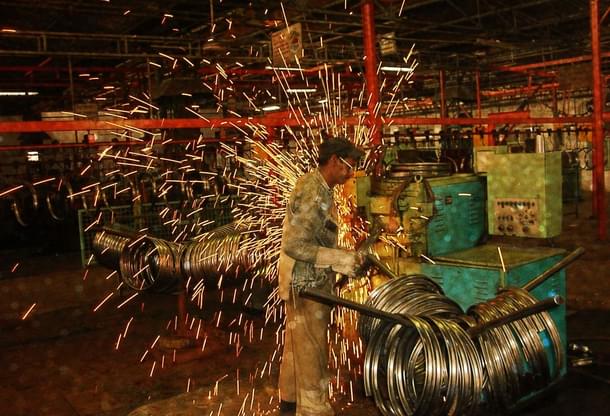News Brief
Standard Chartered Report Predicts India's GDP To Reach $6 Trillion By 2030: Here Are The Highlights
Yathansh Joshi
Aug 04, 2023, 06:34 PM | Updated 06:33 PM IST
Save & read from anywhere!
Bookmark stories for easy access on any device or the Swarajya app.


Standard Chartered Bank has recently released a research report predicting significant growth in India's per capita income, amidst other projections on India's positive growth trajectory.
The report has encouraging predictions across six indices:
Size of GDP
Per capita income
Household consumption expenditure
Trade
States' GDP
GDP
According to the report, by FY 2030, India's GDP would be worth $6 trillion, nearly doubling from the current size of $3.5 trillion.
Notably, over half of this GDP will be driven by household consumption.
Per capita income
The report forecasts that by fiscal 2030, the per capita income of India will soar by nearly 70 per cent to reach $4,000, up from $2,450 in fiscal 2023.
From fiscal 2001 to fiscal 2021, there has been a significant increase in per capita income of India. It rose from $460 to $2,150. By fiscal 2023, it is projected to reach $2,450.
Household support
According to the report, household consumption is identified as the second major driver of growth. It is projected to reach $3.4 trillion by fiscal 2030, which is equivalent to the current size of the entire GDP.
This is a significant increase from $2.1 trillion in fiscal 2023. Currently, household consumption accounts for 57 per cent of the country's GDP.
Trade boost
According to Standard Chartered Bank's projections, the main driver of growth will be external trade.
They estimate that by 2030, external trade will nearly double to $2.1 trillion, up from $1.2 trillion in fiscal 2023 when the GDP stood at $3.5 trillion.
The report anticipates an impressive surge in external trade, assuming a consistent 10 per cent annual growth in nominal GDP.
States' role
The report predicts that nine states in the country will rise to the upper-middle-income status, with a per capita income equal to, or more than $4,000.
Delhi, Gujarat, Haryana and Telangana, are amongst some of the states mentioned in this regard.
As of fiscal year 2023, Telangana leads the per capita income league table with Rs 2,75,443, followed closely by Karnataka with Rs 2,65,623, Tamil Nadu with Rs 2,41,131, Kerala with Rs 2,30,601, and Andhra Pradesh with Rs 2,07,771.
States like Telangana, Delhi, Karnataka, Haryana, Gujarat, and Andhra Pradesh collectively contribute 20 per cent to the national GDP. It is projected that by 2030, these states will achieve a per capita GDP of $6,000.
On the other hand, Uttar Pradesh and Bihar, which make up 25 per cent of the country's population, are expected to have a per capita income below $2,000 even in fiscal 2030, although this would still be twice their fiscal 2020 levels.
According to the report, household consumption expenditure in India currently accounts for 57 per cent of its GDP. Even if this share reduces by 1 per cent, the consumer market would still be equivalent in size to the entire economy at present.
The people behind the growth
The report also highlights the importance of the working-age population in driving economic growth. It is projected that the share of working-age population in the country will increase from 64.2 per cent in 2020 to 64.8 per cent by 2040, eventually declining to 61.1 per cent in 2050.
This demographic advantage is expected to contribute to labour efficiency, capital deployment, and sustained growth.
Drivers of growth
The report also identifies the following factors as the 'drivers of growth':
Consistent policy reform
Macro stability
Healthy external/financial sector
Large share of working population
Digitisation
Political stability
Caveats
However, the report warns that negative growth in employment rate could hinder per capita real GDP growth.
To ensure robust and sustained economic growth, the report identifies consistent reform progress, macro stability, a healthy financial sector, deleveraging of the corporate sector, and increased public capex as crucial factors.
Prime Minister Narendra Modi has expressed his commitment to achieving a $5 trillion economy in his next term. This ambitious goal would position India as the third-largest economy in the world, surpassing countries like Japan and Germany.
Notably, the presence of political stability and a government with reform-centric approach has been credited by the report for enabling the growth, even as it underlines the crucial importance of its continued existence for sustaining the momentum.





